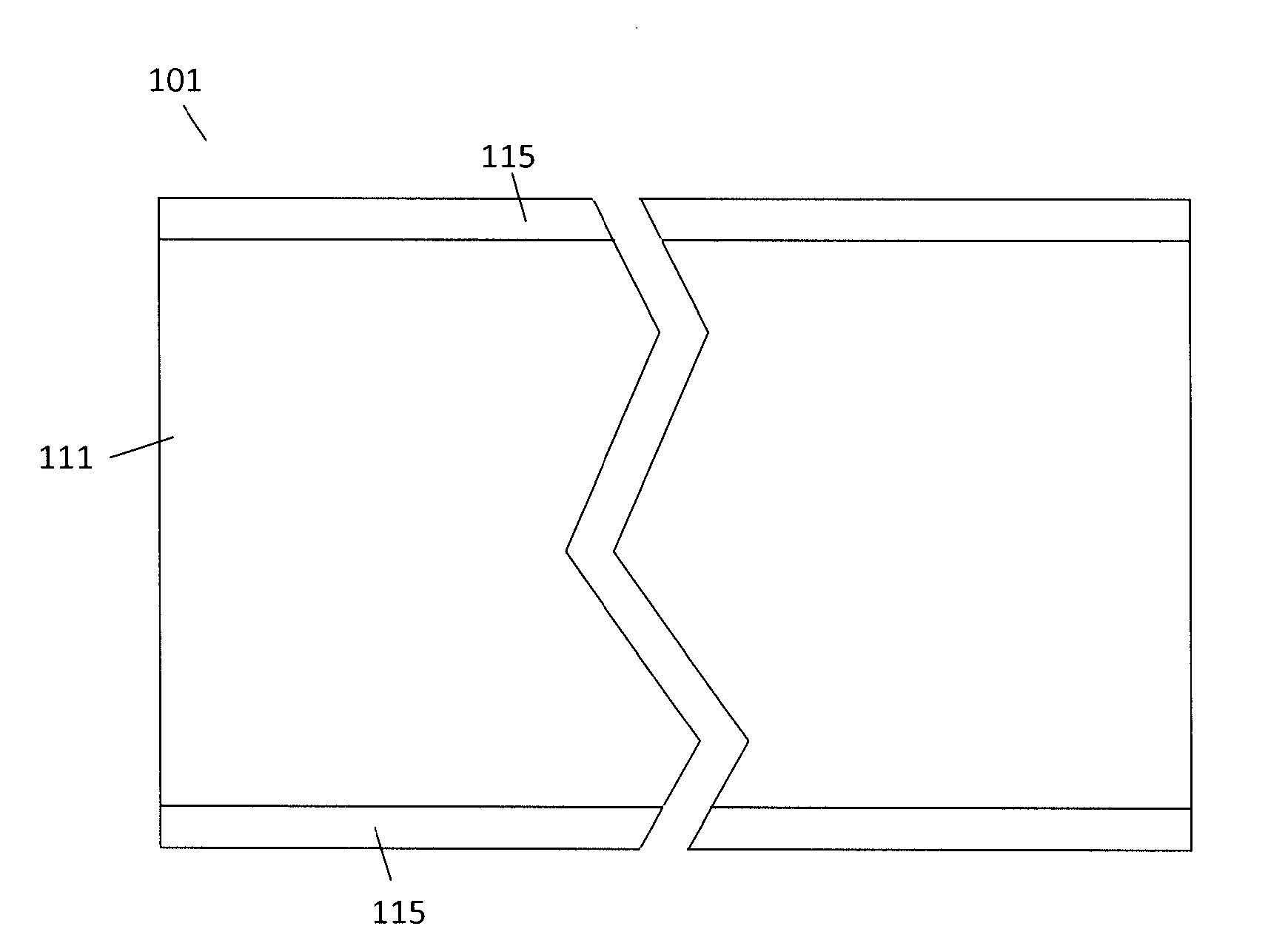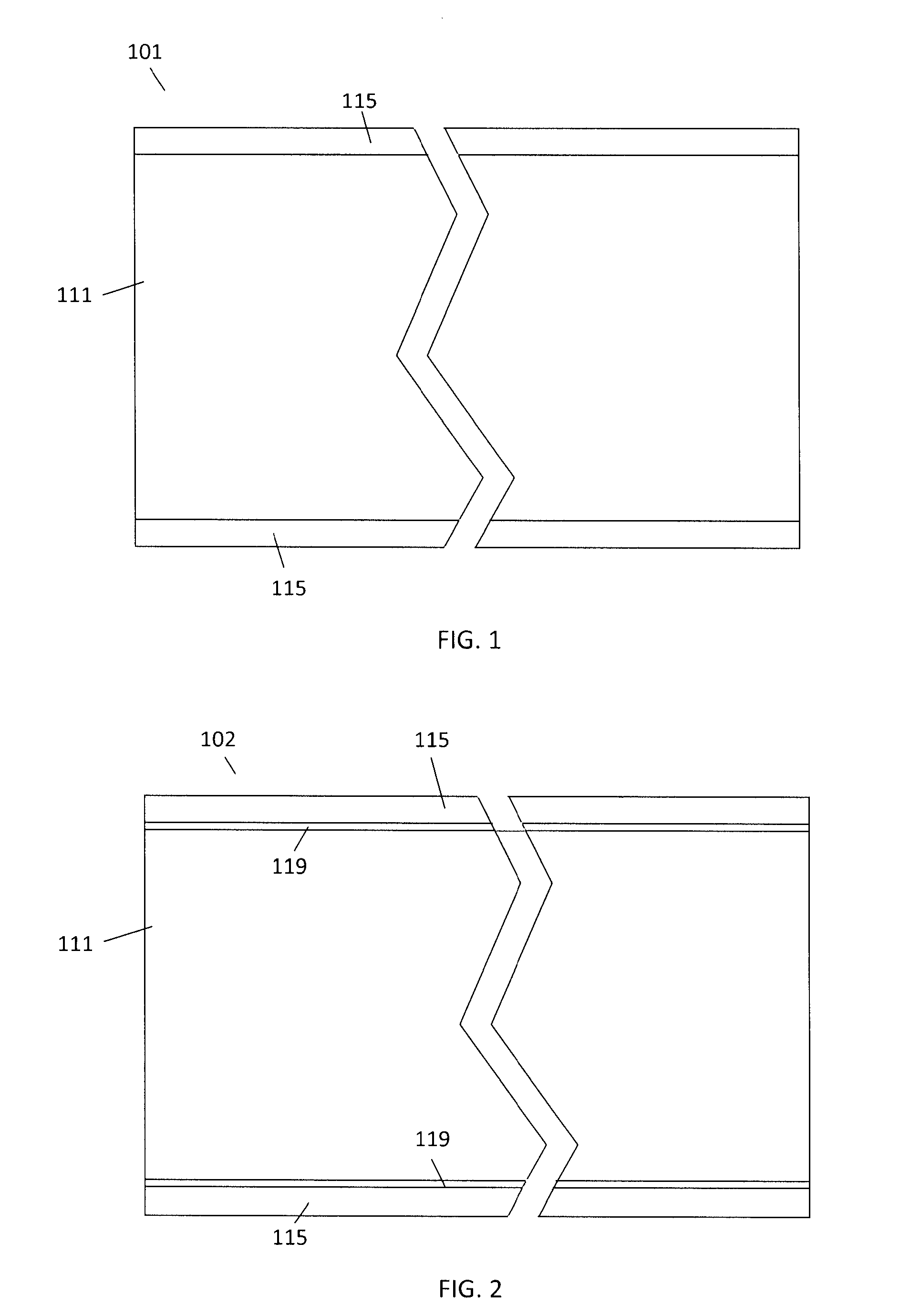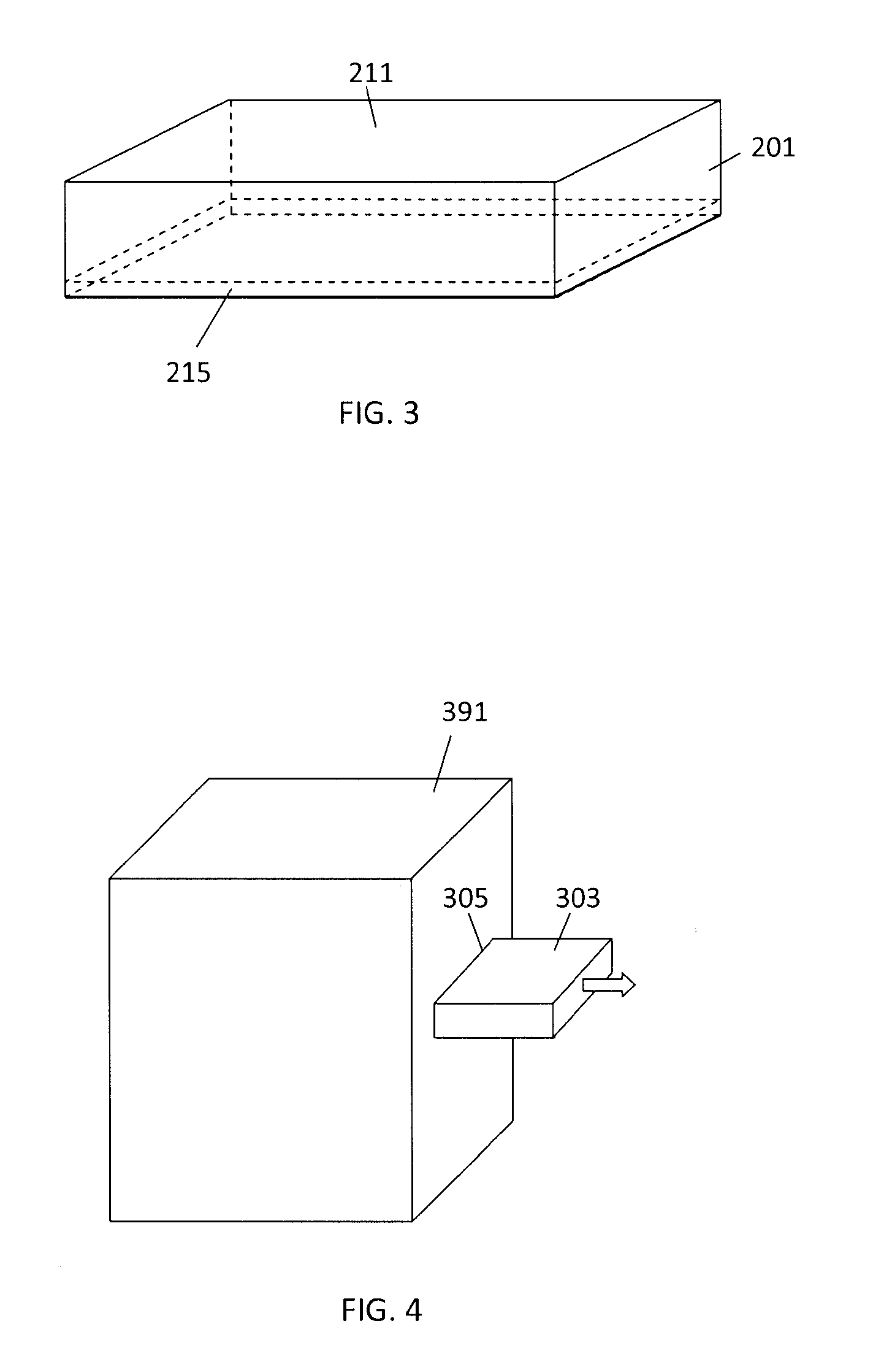Thermally conductive polymer based printed circuit board
a printed circuit board and polymer technology, applied in the direction of printed circuit manufacturing, printed circuit aspects, circuit thermal arrangement, etc., can solve the problems of poor thermal conductivity properties of non-conductive substrates, and achieve the effect of preventing unwanted soldering
- Summary
- Abstract
- Description
- Claims
- Application Information
AI Technical Summary
Benefits of technology
Problems solved by technology
Method used
Image
Examples
Embodiment Construction
[0020]The present invention is directed towards a polymer based thermally conductive printed circuit board (PCB). With reference to FIG. 1 the PCB 101 includes a polymer substrate 111 and conductive layers 115 bonded to upper and lower surfaces of the polymer substrate 111. The present invention differs from the prior art because the polymer substrate 111 is a dielectric material that also has high thermal conductivity properties that help to dissipate heats from electrical components mounted on the PCB 101. This inherent ability to dissipate heat allows heat producing components to be mounted on the PCB 101 without the addition of a heat sink to keep the component at a thermal equilibrium that is within the acceptable operating temperature range. In this embodiment, the conductive layers 115 are bonded directly to the polymer substrate 111. In another embodiment with reference to FIG. 2, the PCB 102 uses layers of an adhesive bonding agent 119 can be used to bond the conductive lay...
PUM
| Property | Measurement | Unit |
|---|---|---|
| Electrical resistance | aaaaa | aaaaa |
| Frequency | aaaaa | aaaaa |
| Electrical resistivity | aaaaa | aaaaa |
Abstract
Description
Claims
Application Information
 Login to View More
Login to View More - R&D
- Intellectual Property
- Life Sciences
- Materials
- Tech Scout
- Unparalleled Data Quality
- Higher Quality Content
- 60% Fewer Hallucinations
Browse by: Latest US Patents, China's latest patents, Technical Efficacy Thesaurus, Application Domain, Technology Topic, Popular Technical Reports.
© 2025 PatSnap. All rights reserved.Legal|Privacy policy|Modern Slavery Act Transparency Statement|Sitemap|About US| Contact US: help@patsnap.com



